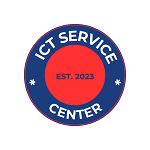The 8 components of ICT are: hardware, software, data, network, internet, people, procedures, and services. ICT, or Information and Communication Technology, encompasses various components that play a crucial role in the modern digital world.
These components include hardware, which comprises the physical equipment, and software, which refers to the programs and applications used. Data, the information stored and processed, alongside networks and the internet, are fundamental components. People, procedures, and services round out the eight components, highlighting the human aspect, operational guidelines, and support functions.
Understanding these elements is key to leveraging the potential of ICT for personal and professional purposes. We’ll delve into each component, exploring their significance and interconnections in today’s technological landscape.

Hardware Components of The Component of ICT
When it comes to understanding the various components of ICT (Information and Communication Technology), it’s essential to delve into the significant role that hardware plays in the overall system. Hardware components form the tangible, physical elements of an ICT system, and they are crucial for processing, storing, and transmitting data. Let’s explore the explanation, role, and interconnection of hardware components within ICT systems.
Explanation And Examples Of Hardware
Hardware in ICT encompasses all the physical equipment used to store, retrieve, and process data. This includes devices such as computers, servers, network equipment, and peripheral devices like printers and scanners. A modern example of hardware in ICT is a smartphone, which encompasses a variety of hardware components such as the processor, memory, display, and camera. These components collectively contribute to the device’s functionality in processing data, connecting to networks, and presenting information.
Role In ICT Systems
- Processing Data: Hardware components, such as the central processing unit (CPU) in a computer, play a vital role in processing and manipulating data.
- Storage: Hard drives, solid-state drives, and other storage devices provide a means of retaining data for later use.
- Networking: Network hardware enables devices to connect and communicate, facilitating the exchange of data within ICT systems.
- Input and Output: Peripherals like keyboards, mice, monitors, and printers are essential for inputting and outputting data.
Interconnection With Other Components
Hardware components in an ICT system are interconnected to collaborate in data processing and communication. For example, a computer’s CPU interacts with the memory, storage devices, and input/output devices to perform various tasks efficiently. Additionally, network hardware, such as routers and switches, assists in facilitating data transfer and communication between different devices within a network, ensuring seamless connectivity and interaction.
Software Components
The software components of ICT are a crucial part of information and communication technology systems. Understanding the various types of ICT software, their functionality, and their integration with hardware is essential for optimizing the efficiency and effectiveness of ICT systems.
Types Of ICT Software
ICT software encompasses a wide range of applications and programs designed to facilitate communication, information processing, and data management. This includes:
- Communication software: such as email clients, instant messaging applications, and video conferencing tools.
- Productivity software: including word processing, spreadsheet, and presentation programs.
- Database management software: for organizing and retrieving data efficiently.
- Enterprise resource planning (ERP) software: to streamline business processes and operations.
Functionality And Significance
The functionality of ICT software is diverse and serves various purposes, from enabling seamless communication and collaboration to streamlining data management and analysis. Its significance lies in enhancing the productivity and efficiency of individuals and organizations, fostering innovation and enabling the seamless flow of information across different platforms.
Integration With Hardware In ICT Systems
The integration of software with hardware in ICT systems is critical for ensuring seamless operation and optimal performance. Hardware components such as servers, routers, and storage devices work in tandem with software to execute tasks, process data, and facilitate communication. The harmonious integration of software and hardware ensures the smooth functioning of ICT systems, promoting reliability and scalability.
Network Components
In the world of Information and Communication Technology (ICT), network components play a crucial role in establishing connectivity and facilitating communication between various devices. Understanding the components that form networks is essential for building and maintaining efficient ICT infrastructure. In this segment, we will delve into the definition and types of networks, explore different topologies and protocols, and discuss the significance of network components in ICT infrastructure.
Definition And Types Of Networks
Networks in ICT refer to the interconnected system of devices and resources that enable data and information exchange. There are various types of networks, including:
- Local Area Network (LAN): A network that connects devices within a limited geographical area, such as an office building or a campus.
- Wide Area Network (WAN): A network that spans over a large geographical area, connecting devices across different locations or cities.
- Wireless Network: Utilizes wireless communication technology to connect devices, offering mobility and flexibility.
- Virtual Private Network (VPN): Provides a secure and private connection over a public network, commonly used for remote access and data protection.
Topologies And Protocols
Network topologies and protocols dictate the structure and communication processes within a network. Common topologies include:
- Bus Topology: Devices are connected to a central cable, creating a linear communication pathway.
- Star Topology: Devices are connected to a central hub or switch, allowing for efficient data transmission.
- Mesh Topology: Devices are interconnected to provide redundant paths for data transfer, enhancing network reliability.
Network protocols outline the rules and conventions for communication between devices. Examples include TCP/IP (Transmission Control Protocol/Internet Protocol) and Ethernet, which govern data transmission and network operation.
Importance In Ict Infrastructure
The network components form the backbone of ICT infrastructure, serving as the conduit for seamless communication and data transfer across various devices and systems. An efficient network architecture enables organizations to streamline operations, enhance collaboration, and ensure secure data exchange. Additionally, the integration of robust network components is pivotal for supporting emerging technologies such as cloud computing, IoT (Internet of Things), and unified communication systems, driving innovation and productivity in diverse industries.

Data Management Components
Data management is a crucial aspect of Information and Communications Technology (ICT). It encompasses various components that play a significant role in the storage, retrieval, security, and privacy of data. The following sections detail the essential components of data management in ICT.
Data Storage And Retrieval
In ICT, data storage and retrieval refer to the processes of storing and accessing digital information. This involves utilizing various storage devices such as hard drives, solid-state drives, and cloud storage solutions. Efficient data storage and retrieval mechanisms are vital to ensure seamless access to critical information and enhance system performance.
Security And Privacy Considerations
Security and privacy considerations are paramount in data management within ICT. Robust security measures, including encryption protocols, access controls, and firewalls, are essential to safeguard sensitive data from unauthorized access or cyber threats. Moreover, adherence to privacy regulations and best practices ensures the protection of individuals’ personal information and compliance with data protection laws.
Role In Ict Operations
The role of data management in ICT operations encompasses overseeing the organization, storage, and retrieval of data to support various IT processes. It ensures the availability and integrity of data for crucial functions such as system backups, disaster recovery, and decision-making processes.
Communication Components
In the realm of ICT (Information and Communication Technology), the communication component plays a pivotal role in shaping connectivity, collaboration, and the transfer of information. This essential component encompasses various modes of communication, diverse tools and technologies, and its profound impact on connectivity and collaboration. An understanding of these elements is crucial in comprehending the intricate nature of ICT and its significance in modern society.
Modes Of Communication In ICT
Communication within ICT unfolds through diverse modes, each enabling the exchange of information and ideas in unique ways. These modes include:
- Verbal communication
- Written communication
- Visual communication
- Electronic communication
Tools And Technologies
The evolution of ICT has led to the development of advanced tools and technologies that enhance communication. These include:
- Video conferencing applications, facilitating real-time visual interaction
- Instant messaging platforms for swift textual communication
- Voice over Internet Protocol (VoIP) services for seamless voice communication over the internet
- Collaborative software enabling remote teamwork and document sharing
Impact On Connectivity And Collaboration
The integration of communication components in ICT has redefined connectivity and collaboration, yielding significant impacts such as:
- Global connectivity, bridging geographical gaps and fostering intercontinental communication
- Enhanced collaboration among remote teams, promoting efficiency and productivity
- Facilitation of seamless information exchange, fostering swift decision-making processes
Internet Components
Internet Components play a crucial role in the development of Information and Communication Technology (ICT). Understanding the various components that form the internet is essential to comprehend its evolution, the web technologies and services, and its influence on ICT development. This article will delve into the Internet Components, specifically focusing on the Evolution of the internet, Web technologies and services, and the Influence on ICT development.
Evolution Of The Internet
The internet has undergone a remarkable evolution since its inception. From its humble beginnings as a research tool to its current state as an indispensable global network, the internet has continually evolved to meet the demands of an interconnected world.
Web Technologies And Services
The advancement of web technologies and services has significantly contributed to the internet’s evolution. From the development of HTML in the early days to the emergence of complex web applications and services, the internet’s capabilities have expanded exponentially, providing users with a diverse array of tools and platforms for communication, commerce, and collaboration.
Influence On Ict Development
The evolution of the internet has had a profound impact on ICT development. The integration of internet components into ICT systems has revolutionized how businesses operate, how individuals communicate, and how information is accessed and shared. The internet’s influence on ICT development is evident in the seamless integration of digital technologies into various aspects of everyday life.
Information Systems Components
Information Systems Components refer to the fundamental elements that make up an information system, enabling organizations to gather, store, process, and distribute data effectively. Each component plays a crucial role in the overall functionality and efficiency of the system.
Structure And Functions
In an information system, components such as hardware, software, data, people, procedures, and networks collaborate seamlessly to ensure the smooth operation of the system. The hardware provides the physical infrastructure, the software facilitates data processing, and the networks enable communication and data transfer. People, as users, interact with the system, while proper procedures govern its usage.
Application In Various Domains
The components of information systems find application in various domains, including business, healthcare, education, finance, and more. In business, information systems are employed for managing operations, analyzing data, and enhancing decision-making processes. In healthcare, these components assist in patient management, medical records maintenance, and research. Likewise, across all domains, these components play critical roles in optimizing processes, fostering innovation, and enabling efficient resource utilization.
Integration Of Components For Effective Information Management
To ensure effective information management, the integration of these components is vital. Proper integration allows for smooth data flow, efficient processing, secure storage, and seamless retrieval of information. This integration is crucial for optimizing the overall performance and utility of the information system, thereby facilitating informed decision-making and strategic planning.
Frequently Asked Questions:
What Are The Main Components Of ICT ?
ICT components include hardware, software, networks, and data. These elements enable the processing and sharing of information.
How Is Hardware A Component Of ICT ?
Hardware refers to physical devices, such as computers and servers, used to process and store data.
What Role Does Software Play In ICT ?
Software consists of programs, applications, and operating systems that enable the functionality of ICT systems. It controls the hardware and enables users to perform various tasks.
Why Is ICT Important In Today’s World?
ICT enhances communication, facilitates information sharing, supports business operations, and drives technological advancements.
Conclusion
Understanding the 8 components of ICT is crucial for navigating the modern digital landscape. By comprehending the hardware, software, data, network, communication, security, internet, and people, individuals and businesses can optimize their use of technology and harness its full potential for productivity and innovation.
Keep these components in mind to stay ahead in the digital era.

